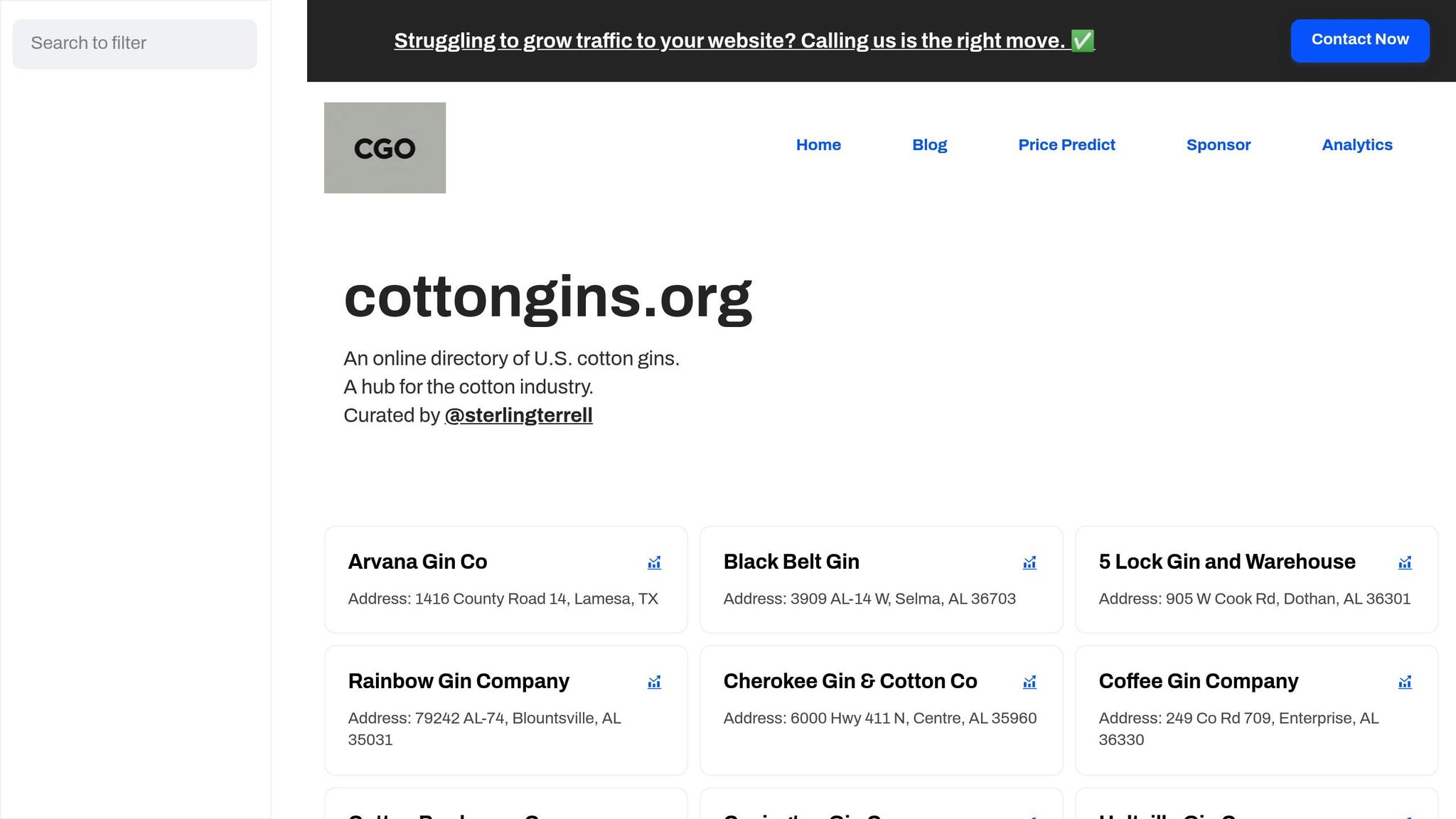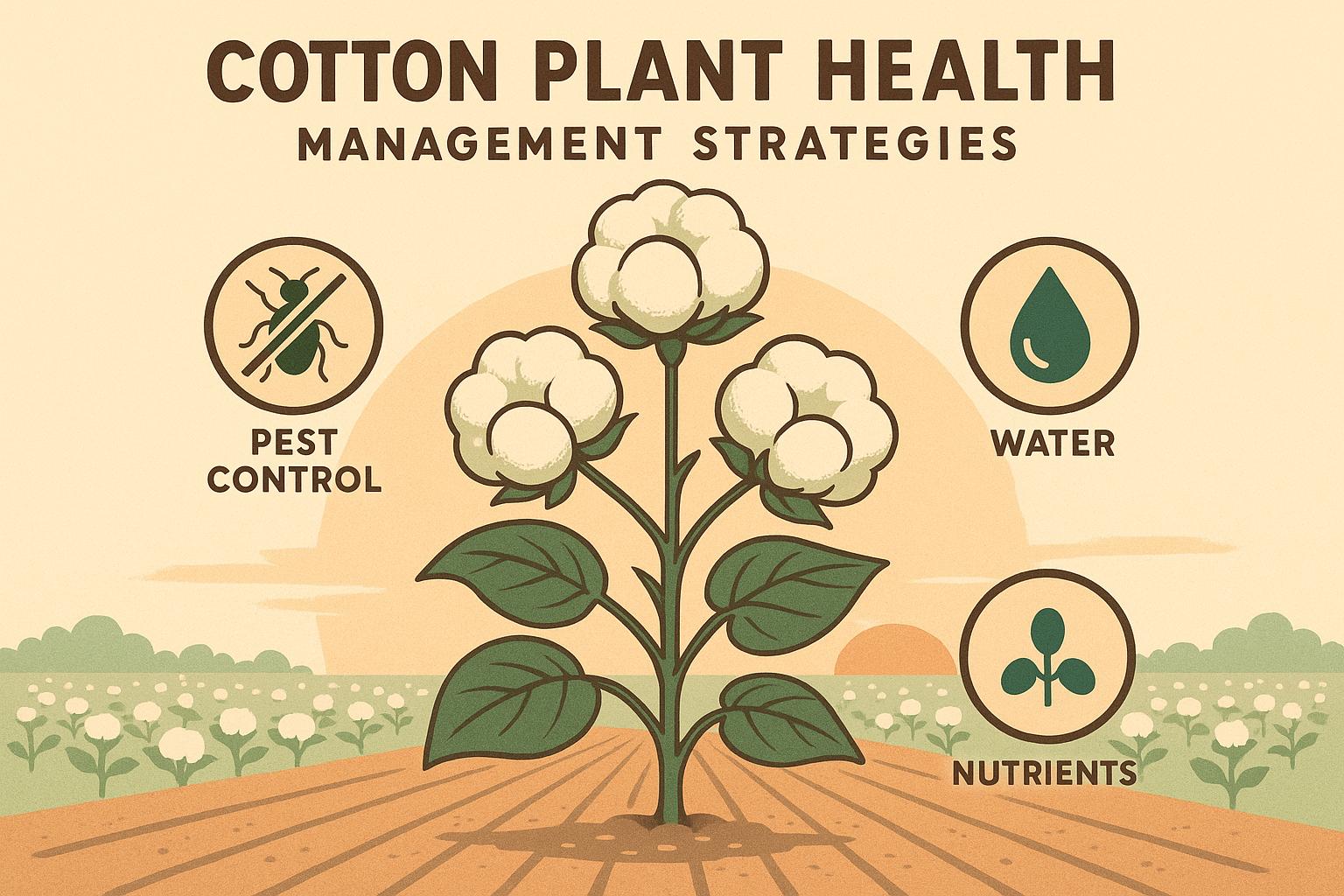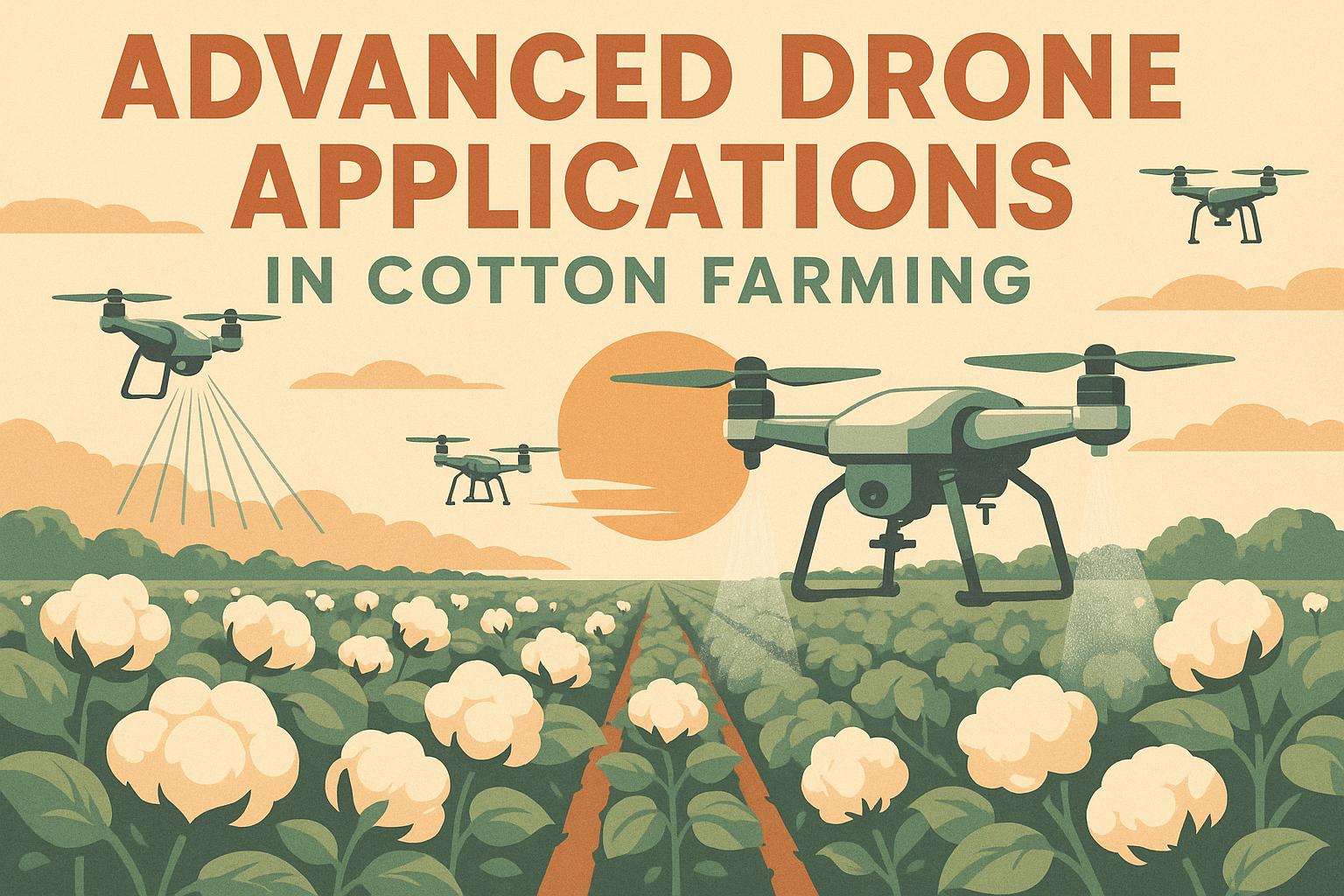Drought severely disrupts cotton production by reducing rainfall, depleting soil moisture, and impacting crop quality. Cotton, though relatively drought-tolerant, struggles during critical growth stages like flowering and boll development. This leads to lower yields, higher abandonment rates, and inferior fiber quality. Key effects include:
- Reduced Planted Acres: Farmers delay or skip planting due to dry soil.
- Lower Yields: Drought can cut yields by up to 70–80%.
- Higher Abandonment Rates: In 2022, nearly 43% of cotton fields in the U.S. were abandoned.
- Regional Variability: Texas faces the worst impacts, while regions like the Delta fare better.
Drought also disrupts the supply chain. Cotton gins process less cotton, causing closures and layoffs. Market shortages drive up prices, with upland cotton reaching $0.97/lb in 2022 - the highest since 1909.
Farmers and gin operators can mitigate these challenges with drought-resistant seeds, precision irrigation, and tools like cottongins.org for locating processing facilities. Collaboration and proactive planning are critical to maintaining operations and stabilizing the industry.
How Drought Affects Cotton Production
Lower Planted Acres and Yields
Drought takes a heavy toll on cotton production, primarily by reducing the number of planted acres and slashing yields on those that are planted. When soil moisture is too low, farmers often delay planting or skip cotton altogether.
Take 2022 as an example: drought conditions in Texas led to a 7% drop in planted upland cotton acres. On top of that, the U.S. saw a record-high abandonment rate of 43.4%, meaning nearly half the cotton fields went unharvested. Dry spells during critical growth stages, like flowering and boll development, can cut yields by as much as 70–80%.
The result? A sharp decline in overall production. In 2022, U.S. cotton production fell to 12.2 million bales, far below the 10-year average of 16 million bales. The USDA even adjusted its production forecast, reducing expectations by 1 million bales to 17 million bales during recent drought years.
These challenges don’t hit every region equally - drought effects vary widely depending on location.
Regional Differences in Drought Effects
Drought’s impact is uneven across the U.S., with the Southwest - especially Texas, Oklahoma, and Kansas - bearing the brunt, while other regions show more resilience.
Texas, for instance, has seen some of the most extreme effects. In 2022, the state recorded a staggering 69% abandonment rate, leaving over two-thirds of its cotton fields unharvested. In the South Plains region, approximately 50% of cotton fields were abandoned in both 2023 and 2024. However, recent rainfall has brought some relief, lowering expected abandonment rates to less than 25%.
The Lower Rio Grande Valley shows just how quickly drought can reshape agriculture. Cotton acreage there plummeted from the usual 100,000–120,000 acres to just 60,000, with flooding adding to the challenges. Extreme drought conditions also left nearly one-third of Texas cotton in "poor or very poor condition".
On the other hand, regions like the Delta and Southeast - including Georgia and Mississippi - fared much better. These areas experienced lower abandonment rates and steadier production. Even within Texas, places like the Coastal Bend, which received timely rains, managed to achieve above-average yields despite the tough conditions.
This regional variability creates ripple effects throughout the supply chain. In areas hit hardest by drought, cotton gins process far less cotton, while regions with milder conditions can maintain closer-to-normal operations.
Other Effects of Drought
Drought doesn’t just reduce planting and yields - it also drives up costs and degrades cotton quality. Farmers face higher expenses for supplemental irrigation, pest control, and crop insurance. At the same time, drought-stressed cotton often produces shorter, weaker fibers, which lowers its market value. This combination of reduced quantity and quality hits farm income hard and limits the supply of high-grade cotton for manufacturers.
Another challenge? The limited availability of drought-resistant seeds. While researchers are working on developing more resilient varieties, they’re not yet widely accessible.
For many farmers, abandoning fields becomes the only viable choice during prolonged droughts. By leaving poor-quality cotton unharvested, they further tighten the overall supply, which pushes market prices higher and adds to supply chain instability.
These cascading effects - reduced production, higher costs, and supply chain disruptions - underscore the far-reaching consequences of drought on the cotton industry.
How Drought Cost America’s Cotton Industry Billions
Supply Chain Problems and Market Changes
When drought hits and cotton production drops, the effects ripple through the entire supply chain. Gin operators face operational hurdles, and the market becomes increasingly unstable.
Cotton Gins Process Less Cotton
The first to feel the pinch are cotton gins. With reduced harvests, many gins are left with less cotton to process, leading to shorter operating hours or, in some cases, temporary closures. Recent droughts have caused widespread abandonment of cotton fields, leaving limited raw cotton for processing. As a result, some gin operators have had to cut hours, shut down temporarily, or even close permanently. Fixed costs remain a burden, and farmers are often forced to transport their cotton farther for processing, adding to their challenges. In the hardest-hit regions, layoffs have become unavoidable, and some gins have shuttered for good.
Market Effects of Cotton Shortages
Drought-induced cotton shortages come with sharp price hikes and market instability. For instance, during the 2022/2023 marketing year, upland cotton prices were forecast to hit 97 cents per pound - the highest since 1909. With the supply dwindling, buyers compete fiercely, driving prices up. Yet, demand for U.S. cotton - combining mill use and exports - was projected at 14.3 million bales, far exceeding production. This imbalance resulted in the lowest ending stocks since 1960.
To address the shortfall, the U.S. had to cut exports while increasing imports to meet domestic needs. Textile manufacturers, facing higher cotton costs and potential delays, turned to alternative fibers or additional imports. These higher production costs eventually trickle down to consumers, who face steeper prices for finished goods. On the global stage, reduced U.S. export volumes tighten international markets, further driving up prices. These challenges stand in stark contrast to the stability seen during years of normal weather.
Drought Years vs. Normal Years
The table below highlights the key differences in gin operations, export volumes, and cotton prices during drought years compared to normal years, showcasing the widespread impact of water shortages.
| Metric | Drought Years | Normal Years |
|---|---|---|
| Gin Operation Rates | Reduced significantly; many closures | Steady, full-capacity operations |
| Export Volumes | Sharply decreased | Stable, meeting international demand |
| Import Volumes | Increased to meet domestic needs | Lower, with minimal supplementation |
| Cotton Prices | Volatile, record highs (97¢/lb in 2022) | Stable, predictable fluctuations |
Under normal conditions, the U.S. cotton industry typically produces around 16 million bales annually, with gins operating at or near full capacity during harvest. But drought years paint a very different picture. In 2022, harvested acreage dropped to just 7.0 million acres - the lowest in over 150 years. This led to a sharp decline in gin operation rates and a significant tightening of supplies. Regional disparities also emerge during droughts: while the Southwest and West experience high abandonment rates and reduced yields, the Delta and Southeast often maintain more stable production, partially offsetting national losses.
For supply chain managers and gin operators, these dramatic shifts highlight the importance of flexibility and contingency planning. Tools like cottongins.org prove invaluable during drought years, helping operators locate active facilities and coordinate processing capacity across different regions.
sbb-itb-0e617ca
Solutions and Ways to Adapt
Drought poses significant challenges for cotton farmers and gin operators, but there are practical strategies that can help reduce its impact. These approaches not only help sustain operations during tough times but also highlight the resilience of the cotton industry.
How Farmers Can Handle Drought
Farmers have several tools and techniques at their disposal to manage drought conditions effectively.
Drought-resistant cotton varieties are a game-changer. These specially bred varieties are designed to thrive with less water, ensuring better yields even during dry spells.
Precision irrigation systems take water efficiency to the next level. By adopting systems like drip irrigation that respond to real-time soil moisture data, farmers can use water more effectively and reduce waste.
Soil management practices are another critical piece of the puzzle. Adding organic matter, reducing tillage, and using mulches can improve the soil's ability to retain water and cut down on evaporation. Practices like cover cropping and conservation farming further enhance the soil's resilience in dry conditions.
Farmers can also benefit from staying proactive. Regularly monitoring soil moisture and adjusting planting schedules based on weather forecasts can make a big difference. Tools like the U.S. Drought Monitor provide real-time insights into drought conditions, helping farmers decide when and where to plant.
How Cotton Gins Can Adjust Operations
For gin operators, adapting to drought means finding ways to work efficiently with reduced cotton supplies.
One effective strategy is flexible scheduling. By coordinating with regional partners, gins can optimize their processing schedules when cotton deliveries are lower than usual. In the Southern U.S., for example, some gins have formed partnerships to share transportation, storage, and processing resources. This collaborative approach ensures that the available cotton is processed efficiently, minimizing losses.
Investing in water-saving equipment is another smart move. Upgrading to more efficient machinery not only cuts water usage but also lowers operational costs. These savings can help gins stay profitable even when they’re processing fewer bales.
Using cottongins.org for Better Operations

Digital tools can provide much-needed support during challenging times. The cottongins.org directory is a valuable resource for both farmers and gin operators.
For farmers, the directory offers an easy way to find alternative gins when their usual facilities face capacity issues or other challenges. During a drought, it can help farmers locate nearby gins, even in neighboring states, making it easier to plan transportation and ensure their cotton gets processed.
For gin operators, the platform helps identify collaboration opportunities. By using the directory’s geographical information, gins can arrange resource-sharing deals, like directing excess cotton to less-impacted facilities or coordinating flexible schedules with other operators.
Financial and technical support is available to help implement these strategies. Farmers and gin operators can explore federal and state agricultural programs, crop insurance, and grants for water-saving technologies. Additionally, agricultural extension services, research institutions, and industry groups offer guidance on best practices and the latest drought management tools.
Conclusion: Making the Cotton Industry Stronger
The challenges posed by recent droughts, like the harsh 2022 season in Texas with its 69% abandonment rate and record-low acreage, highlight the shortcomings of reactive approaches. These events emphasize the need for proactive strategies that farmers and gin operators can adopt immediately.
Key Takeaways for Farmers and Gin Operators
To build resilience against drought, a combination of forward-thinking practices, advanced technologies, and strong partnerships is essential. Farmers should focus on drought-tolerant cotton varieties, efficient water-saving systems, and soil health improvements. Meanwhile, gin operators can adapt by optimizing schedules and diversifying their services.
Resources like the cottongins.org directory are invaluable for connecting with processing facilities and forming strategic alliances, which can help sustain operations during tough times. Additionally, tools like precision irrigation systems and advancements in transgenic cotton lines are proving to be game-changers in boosting yields and drought resistance.
Collaboration and Innovation: The Path Forward
The future of the cotton industry lies in collective action. Efforts such as joint research projects, regional resource sharing, and unified policy advocacy offer a stronger foundation than isolated attempts.
Take Alabama as an example. Cotton farms there have successfully maintained fiber quality in drought conditions by adopting shared practices like cover cropping and improved irrigation techniques. These methods, shared through industry networks, are now benefiting producers throughout the region.
Looking ahead, practices like regenerative agriculture and investments in water management infrastructure are shaping the industry's direction. Some areas are experimenting with community-based water-sharing programs and enhanced drought insurance options, while research into genetically engineered drought-tolerant cotton continues to advance.
For the industry to thrive, regular communication between farmers and gin operators is critical. Joint investments in technology and the exchange of crop-condition data can help the entire supply chain respond more effectively to drought. Platforms like cottongins.org play a vital role in fostering these collaborations, enabling the industry to stabilize production and maintain market confidence. By combining tried-and-true methods with emerging innovations, the cotton industry can strengthen its resilience, ensuring consistent quality and reliability in the face of future challenges.
FAQs
How can drought-resistant cotton varieties help farmers during dry conditions?
Drought-resistant cotton varieties are a game-changer for farmers facing dry spells. These cotton types are specially developed to make the most of limited water, ensuring crops can thrive even when irrigation is scarce. This means farmers can sustain their yields despite challenging conditions.
By boosting the ability of cotton crops to withstand drought, these varieties help stabilize the supply chain and provide farmers with a practical way to navigate unpredictable weather. The result? More dependable harvests and less financial pressure during tough times.
What can cotton farmers do to preserve soil moisture during droughts?
During droughts, cotton farmers have several effective strategies to conserve soil moisture. Techniques like mulching and reduced tillage play a key role in keeping water in the soil. Using advanced irrigation methods, such as drip irrigation or subsurface drip irrigation, can further cut down on water loss while ensuring efficient water use.
Farmers can also improve soil health and its moisture-holding capacity through cover cropping and crop rotation. These approaches are essential for sustaining cotton production even when water is scarce in the U.S.
How does drought in different regions impact the U.S. cotton supply chain?
Drought has a significant impact on the U.S. cotton supply chain, causing uneven drops in cotton production across different regions. This inconsistency can lead to shortages in certain areas, higher costs for farmers and gin operators, and logistical hurdles when transporting cotton between regions.
These challenges often ripple through the supply chain, driving up market prices for cotton and causing delays in processing, which affects everyone from producers to consumers. To tackle these issues, farmers and gin operators can consider adopting water-saving techniques and upgrading irrigation systems to improve resilience.


